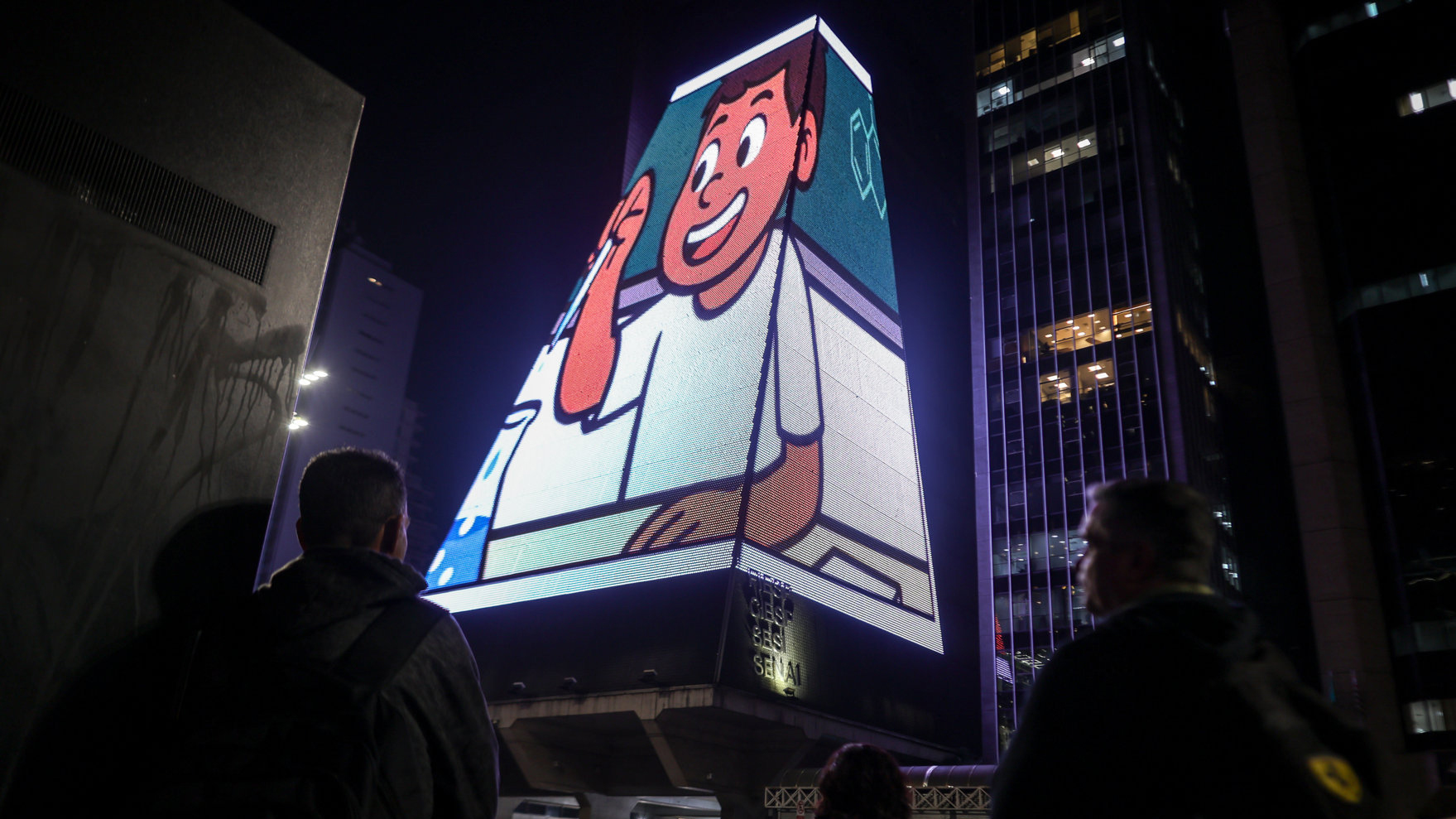The façade of the FIESP building on Avenida Paulista in São Paulo, Brazil—home to what is reported as Latin America’s largest open-air digital art gallery—has been entirely transformed. ON, the international audiovisual technology company behind the original installation in 2012, has completed a technological overhaul of the SESI Digital Gallery, replacing the previous 26,000 LED dots with more than 120,000 newly engineered units. The result was a fourfold increase in resolution and more than 10 times the brightness, offering a dramatically enhanced visual experience to millions who pass by each year.
[Check Out the Largest LED Wall in the Middle East]
The SESI Digital Gallery is a curated space dedicated to artistic expression. It serves to showcase digital artworks and video art by invited artists, exhibit cultural and experimental audiovisual content, and function as a platform for urban visual communication.
The FIESP building famously appears to float above Paulista Avenue. At night, its trapezoidal steel façade transforms into a monumental digital canvas. ON’s renovation involved replacing the entire digital skin with around 120,000 newly designed LED dots, each installed by hand with architectural precision across more than 30,000 square feer (2,818 square meters) making it one of the largest permanent LED art installations in the world.
The new system raises maximum brightness from 45 to 471 cd/m² and increases resolution from 221x170 to 480x322 dots. Color reproduction has expanded from 68 billion to over 281 trillion possibilities, thanks to 16-bit RGB processing.
“Installing this many dots on such a challenging structure was like assembling a giant instrument,” said Hugo Rodrigues, CEO of ON. “We needed to respect the architecture while making the technology almost invisible.”
One of the critical breakthroughs was the development of a custom pixel mapping system tailored to the building’s unique contours. Traditional video mapping methods were incompatible with the trapezoidal geometry. ON reprogrammed the control boxes so each segment of the façade could correctly interpret and display content—allowing for seamless playback of audiovisual artworks across the irregular surface.
“We had to teach the building how to ‘read’ the video data in a new way,” Rodrigues explained. “Now, each control box understands its exact starting point, which enables pixel-perfect alignment with the architecture.”
ON developed a fully customized pixel mapping architecture, enabling each control box to identify its exact position on the façade—essential for seamless alignment of content across non-linear surfaces. To make the platform accessible for creatives, ON also generated an intuitive pixel map compatible with standard visual design software, allowing artists to develop and preview content without needing deep technical knowledge. This approach bridges the gap between technical complexity and creative freedom, turning the gallery into a programmable, artist-friendly canvas.
“This is more than a building—it’s a message,” concluded Rodrigues. “A symbol of São Paulo’s creative drive, and proof that with precision and vision, technology can become part of the city’s soul. This project goes beyond hardware—it reaffirms São Paulo’s role as a global capital of urban creativity. The FIESP Digital Gallery was a pioneer thirteen years ago. Now, we’ve rebuilt it to meet the standards of the future.”
